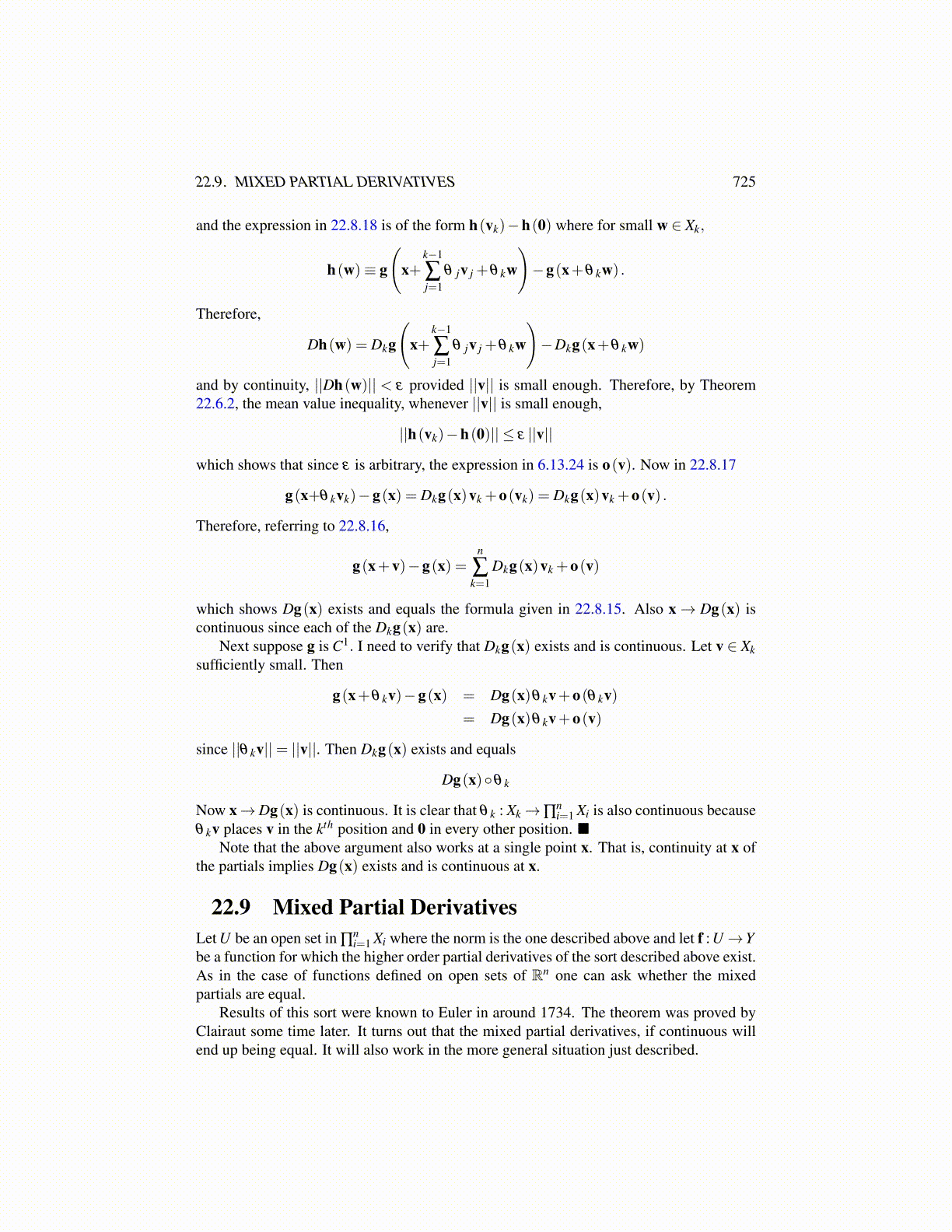
22.9. MIXED PARTIAL DERIVATIVES 725
and the expression in 22.8.18 is of the form h(vk)−h(0) where for small w ∈ Xk,
h(w)≡ g
(x+
k−1
∑j=1
θ jv j +θ kw
)−g(x+θ kw) .
Therefore,
Dh(w) = Dkg
(x+
k−1
∑j=1
θ jv j +θ kw
)−Dkg(x+θ kw)
and by continuity, ||Dh(w)|| < ε provided ||v|| is small enough. Therefore, by Theorem22.6.2, the mean value inequality, whenever ||v|| is small enough,
||h(vk)−h(0)|| ≤ ε ||v||
which shows that since ε is arbitrary, the expression in 6.13.24 is o(v). Now in 22.8.17
g(x+θ kvk)−g(x) = Dkg(x)vk +o(vk) = Dkg(x)vk +o(v) .
Therefore, referring to 22.8.16,
g(x+v)−g(x) =n
∑k=1
Dkg(x)vk +o(v)
which shows Dg(x) exists and equals the formula given in 22.8.15. Also x→ Dg(x) iscontinuous since each of the Dkg(x) are.
Next suppose g is C1. I need to verify that Dkg(x) exists and is continuous. Let v ∈ Xksufficiently small. Then
g(x+θ kv)−g(x) = Dg(x)θ kv+o(θ kv)= Dg(x)θ kv+o(v)
since ||θ kv||= ||v||. Then Dkg(x) exists and equals
Dg(x)◦θ k
Now x→Dg(x) is continuous. It is clear that θ k : Xk→∏ni=1 Xi is also continuous because
θ kv places v in the kth position and 0 in every other position.Note that the above argument also works at a single point x. That is, continuity at x of
the partials implies Dg(x) exists and is continuous at x.
22.9 Mixed Partial DerivativesLet U be an open set in ∏
ni=1 Xi where the norm is the one described above and let f : U→Y
be a function for which the higher order partial derivatives of the sort described above exist.As in the case of functions defined on open sets of Rn one can ask whether the mixedpartials are equal.
Results of this sort were known to Euler in around 1734. The theorem was proved byClairaut some time later. It turns out that the mixed partial derivatives, if continuous willend up being equal. It will also work in the more general situation just described.